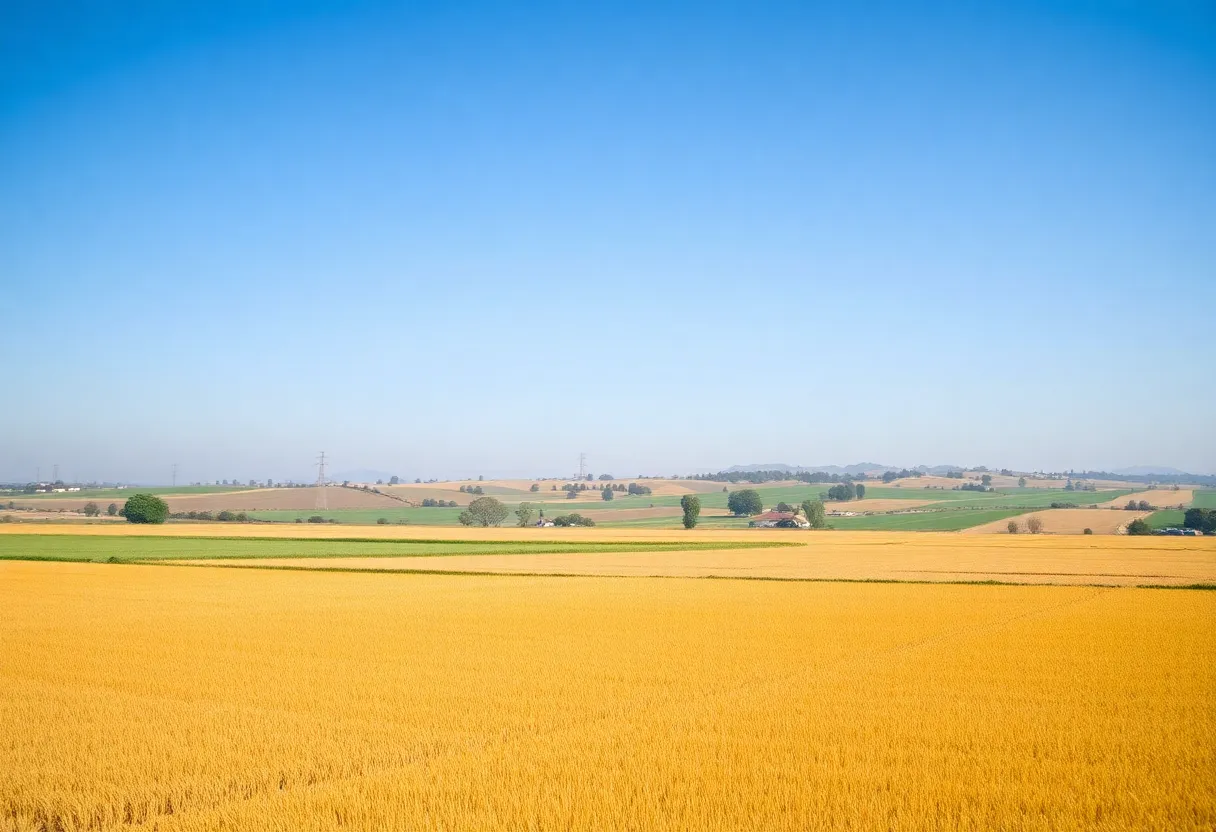California, October 23, 2025
News Summary
California is facing persistent drought conditions that jeopardize its vital rice farming industry, crucial for the state’s agricultural economy. With approximately 300,000 acres of rice fields predicted to remain unharvested this year, farmers are grappling with severe water shortages. Innovative practices are being implemented to promote sustainability, while collaboration among growers is essential to tackle ongoing challenges and secure the future of rice farming in the state. Crop insurance offers some financial relief, but concerns about long-term impacts persist amidst ongoing drought conditions.
California’s Drought and Its Impact on the Rice Industry: Challenges and Innovations
California is grappling with severe drought conditions that threaten the rice farming industry, essential to the state’s $50 billion agricultural sector. With about 300,000 acres of rice fields expected to remain unharvested this year, the drought poses a significant challenge for rice growers across the region.
Everett Willey, a fourth-generation rice farmer from Nicholas, California, emphasizes the importance of water management as a pivotal factor for rice farming, which relies heavily on timely and efficient water allocation. The Sacramento Valley, known as the heart of California’s rice production, has faced the brunt of limited water resources, related to the ongoing drought, which has stretched for three consecutive years.
Rice farming in California generates an estimated $5 billion in revenue and provides approximately 25,000 jobs in the region. Innovative practices have emerged as rice growers balance tradition with modern conservation techniques, emphasizing sustainability amid water scarcity. The California Rice Commission (CRC) advocates for the needs of both rice growers and millers, focusing on issues related to pesticide regulation, wildlife habitat preservation, and public education about the industry.
Farmers have adopted various methods to contribute positively to the ecosystem. Many rice fields serve as surrogate wetlands, supporting numerous wildlife species, particularly migratory birds along the Pacific Flyway. Initiatives such as the “Fish Food” program are designed to aid salmon populations by introducing zooplankton from rice fields into local waterways, enhancing food sources for juvenile salmon.
In contrast, some areas like Butte County appear to have benefitted from sufficient water supplies, allowing farmers to plant more rice than in previous years. However, many growers, such as Kurt Richter in Colusa, face stark reductions in planted acreage, having cultivated only 1,300 acres of rice compared to a normal 5,000 acres due to water shortages.
To manage the disparity in water availability, the Glenn-Colusa Irrigation District has focused on infrastructure updates and river restoration projects that enhance the overall water allocation process. The CRC continues to promote conservation while managing the impacts of the enduring drought on farmers and wildlife.
As California’s rice industry evolves amidst these challenges, crop insurance offers some financial relief for affected farmers. However, there is mounting concern about long-term sustainability given the persistent nature of drought conditions. With future water availability uncertain, collaboration among rice growers is increasingly critical as they seek to address ongoing challenges and secure the industry’s future.
FAQs
What is the current situation of California’s rice farming due to drought?
California is grappling with severe drought conditions that threaten the rice farming industry. Approximately 300,000 acres of rice fields are expected to remain unharvested this year.
How much revenue does the California rice farming industry generate?
Rice farming in California generates an estimated $5 billion in revenue.
What is the role of the California Rice Commission?
The California Rice Commission advocates for the needs of both rice growers and millers, focusing on issues related to pesticide regulation, wildlife habitat preservation, and public education about the industry.
What initiatives are being taken to support wildlife?
Many rice fields serve as surrogate wetlands, supporting various wildlife species. Initiatives such as the “Fish Food” program aim to support salmon populations by introducing zooplankton from rice fields into local rivers.
How are farmers in different regions affected by the drought?
Farmers in areas like Butte County have fared better, receiving sufficient water to plant more rice. In contrast, others, such as those in Colusa, have only been able to plant significantly fewer acres due to water shortages.
Key Features of California’s Rice Industry
| Feature | Detail |
|---|---|
| Revenue generated | $5 billion |
| Jobs provided | Approximately 25,000 |
| Acres of rice fields unharvested | 300,000 acres |
| Reduction in planted acreage in Colusa | From 5,000 acres to 1,300 acres |
| Years of ongoing drought | 3 years |
Deeper Dive: News & Info About This Topic
- KCRA: Small Bugs in California Rice Fields Impact Salmon
- Wikipedia: Drought
- Sacramento Bee: California’s Local News
- Google Search: California rice industry
- San Francisco Chronicle: California Rice Farming in Colusa
- Encyclopedia Britannica: Rice

Author: STAFF HERE HOLLYWOOD
The Hollywood Staff Writer represents the experienced team at HEREHollywood.com, your go-to source for actionable local news and information in Hollywood, Los Angeles County, and beyond. Specializing in "news you can use," we cover essential topics like product reviews for personal and business needs, local business directories, politics, real estate trends, neighborhood insights, and state news affecting the area—with deep expertise drawn from years of dedicated reporting and strong community input, including local press releases and business updates. We deliver top reporting on high-value events such as the Hollywood Bowl summer concerts, the Hollywood Christmas Parade, film premieres at TCL Chinese Theatre, and festivals at the Magic Castle. Our coverage extends to key organizations like the Hollywood Chamber of Commerce and Visit Hollywood, plus leading businesses in entertainment, dining, and tourism that define the local economy. As part of the broader HERE network, including HERELosAngeles.com, HEREBeverlyHills.com, HEREAnaheim.com, and HEREHuntingtonBeach.com, we provide comprehensive, credible insights into Southern California's dynamic landscape.





